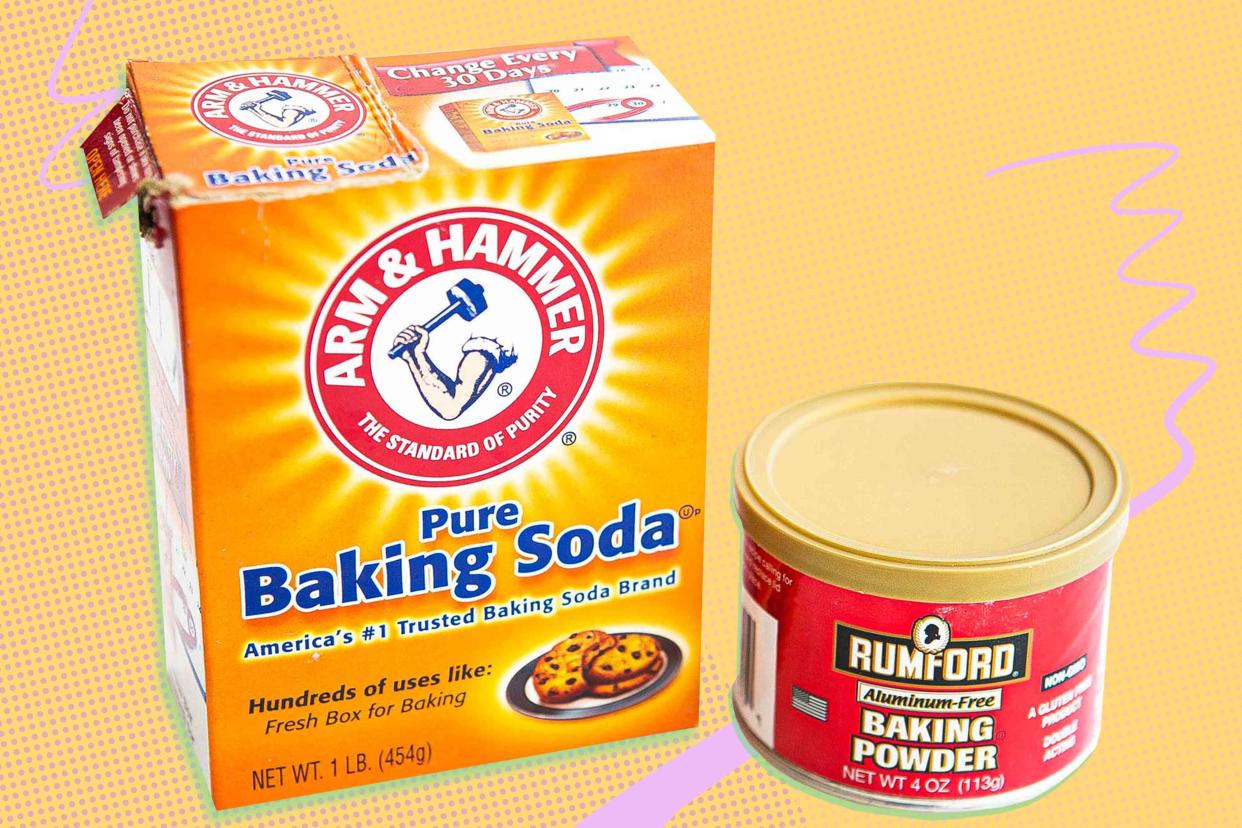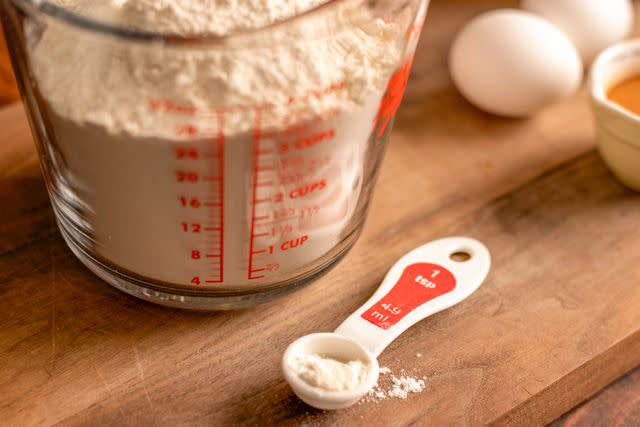Baking Soda vs. Baking Powder: A Pastry Chef Explains the Difference
They have different uses.

Simply Recipes / Photo Illustration by Wanda Abraham / Getty Images
I love to bake—cookies, brownies, cakes, pies. If it’s sweet, I’ve probably made it. I always have baking powder and baking soda on hand, but I’m embarrassed to admit that I’m not exactly sure what the difference is between them.
I talked to pastry chef Bridget Vickers, Associate Dean of Students at the Institute of Culinary Education's Los Angeles campus about the two common baking ingredients.
“Baking soda is an alkaline compound that requires moisture and an acid, like buttermilk, vinegar, yogurt, honey, cocoa powder, brown sugar, or molasses to activate it. This acid allows for the carbon dioxide to be released, helping the dough or batter to rise,” Vickers explains.
Baking powder, on the other hand, is a mixture of baking soda, cream of tartar or another acid, and cornstarch. When liquid is added and mixed with dry ingredients, some of the carbon dioxide is released. Then, when it’s exposed to heat during baking, the rest of the gas is released. That’s why it’s considered a double-acting ingredient.
Read More: This Is the Right Place To Store Your Baking Powder
How Baking Soda and Baking Powder Are Used
Baking soda is used in recipes that have an acidic liquid. “It creates a lighter texture in baked goods like devil’s food or red velvet cakes, and contributes to the browning and flavor of the finished item,” Vickers says.
Baking powder is used in recipes like biscuits or scones that don’t have strong acids among the ingredients. “Since it is a self-contained leavening agent, it ensures each baked good rises properly and creates a balanced texture and flavor.”
Sometimes you’ll see both baking powder and baking soda in an ingredient list, which allows for “more control over flavor, texture, and the final appearance,” according to Vickers. “Baking soda provides the neutralization of the acidic ingredients while baking powder provides the extra leavening needed to make the baked product rise.”

Simply Recipes / Getty Images
Can You Substitute One for the Other?
If you realize you only have one of these leaveners and you need the other, you can substitute but it’s not ideal. It’s difficult to use baking soda in place of baking powder because you need an acidic ingredient to activate it. You can use about one-quarter teaspoon of baking soda for every teaspoon of baking powder, and an acid like one teaspoon of lemon juice or white vinegar, or one-half teaspoon of cream of tartar.
To replace baking soda, use three times the amount of baking powder in its place. However, this might affect the recipe’s taste and texture in ways that are hard to predict. For example, your baked good might taste too acidic because the baking soda is not present to neutralize the acidic ingredients. In general, it is best to use the leavener called for in the recipe for the best outcome.
Be sure to check the best-by date before using either baking soda or baking powder. “Using the wrong leavening agent, or one that’s expired, can lead to baked goods that are dense, flat, or have an unusual taste or color,” says Vickers. “Baking soda and baking powder lose their effectiveness over time, so always check their freshness before starting your recipe. An expired leavening agent won’t produce the carbon dioxide needed for proper rising, leading to disappointing results.”
Read the original article on Simply Recipes.
